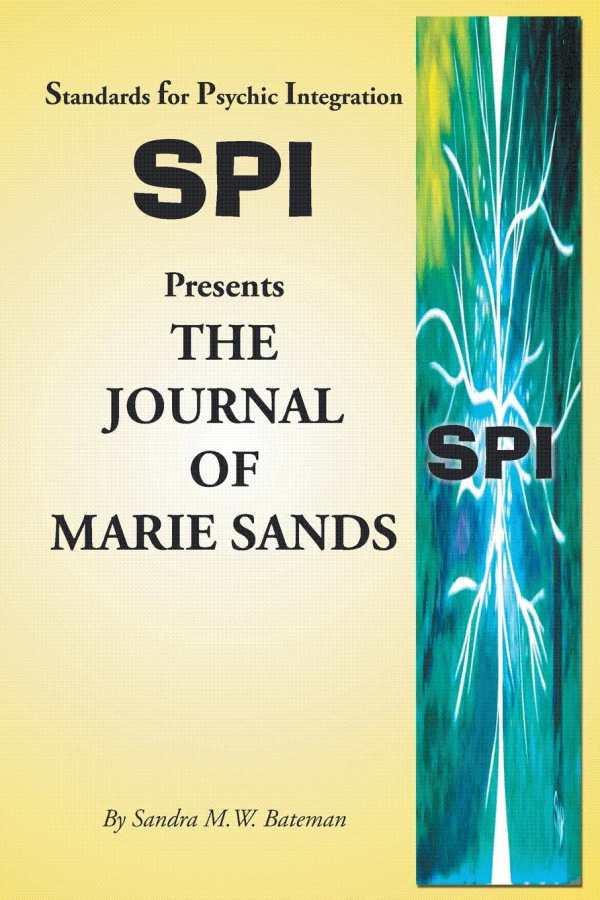Standards for Psychic Integration Presents the Journal of Marie Sands
In a world where the paranormal is normal, a woman tests herself psychically and spiritually.
Sandra M. W. Bateman writes about experiences of paranormal activity in Standards for Psychic Integration Presents the Journal of Marie Sands. Her story centers on a psychically gifted woman who attracts the attention of secretive federal government agents.
Marie Sands’s unusual talent sets her apart from other people, and she has retired from a business career to live alone on the northern California River delta. Wanting to use her psychic gifts to help others, she quietly offers her services to friends and the few religious and medical professionals who believe in the efficacy of her work. In a parallel plot, the United States government has just passed a universal health care program and seeks citizens with exceptional psychic abilities. Agent Ed Ricks and Director Michael Tipper summon Marie to the western regional office of the Standards for Psychic Integration (SPI) in Sacramento. Instead of trying to explain the nature of her psychic abilities, she gives them the journals she has written that describe her “out of body” experiences.
Divided into three parts, part 1 of the novel concerns the SPI program and Marie’s introduction to it. The middle section relates the contents of her journals, with periodic asides to Michael’s reactions as he peruses its pages. He is depicted in the first section as a tough-minded federal agent with a big ego. In part 2, he undergoes a spiritual transformation while reading about Marie’s selfless support of people near death and discussing these episodes with his devout Catholic wife, Bethany. Michael’s rapid personality change, over a two-day period, from stern government official to compassionate believer in psychic events seems unlikely.
The second section of the book offers more compelling reading than the artificiality of the SPI subplot. Significantly, Marie relates her unusual experiences in an affecting first-person voice. She explains that these psychic incidents come without warning when she suddenly finds herself in unfamiliar situations both physically and spiritually, with someone who needs her help. The author describes these events realistically and reveals in part 3 that the journal entries represent her own psychic “journeys.” She explains, “But when God called and said, ‘I need you here now’ what else was there to do but follow His instructions?”
Standards for Psychic Integration Presents the Journal of Marie Sands offers insight into the healing possibilities of psychic phenomenon. Bateman’s writing style tends toward excessive detail but includes some well-drawn scenes of nature. Although Marie comes to life realistically, her overreactions to certain situations are excessive. The author depicts Michael and Bethany’s characters less convincingly, but the spiritual lessons they learn from Marie’s journals have value. A table of contents would help to delineate the book’s three-part structure, as would chapter titles. Bold type used to highlight journal entries, newspaper articles, and correspondence hinders readability. Numerous errors in grammar and punctuation, redundant information, and inconsistencies in tense and voice escaped editing.
Those interested in learning about reported paranormal events will enjoy this book. Doubters might also benefit from considering its message of compassion.
Reviewed by
Margaret Cullison
Disclosure: This article is not an endorsement, but a review. The publisher of this book provided free copies of the book and paid a small fee to have their book reviewed by a professional reviewer. Foreword Reviews and Clarion Reviews make no guarantee that the publisher will receive a positive review. Foreword Magazine, Inc. is disclosing this in accordance with the Federal Trade Commission’s 16 CFR, Part 255.

